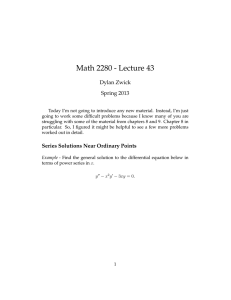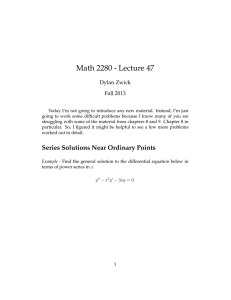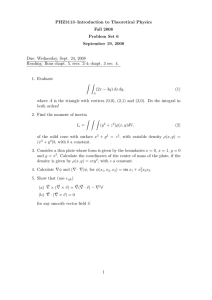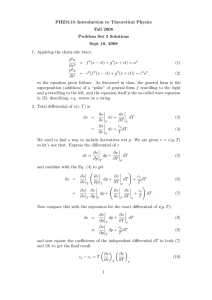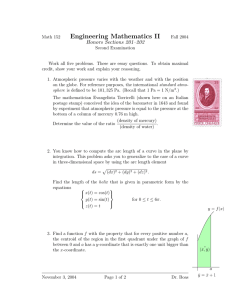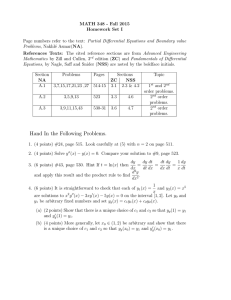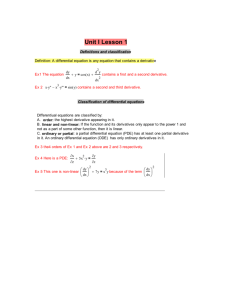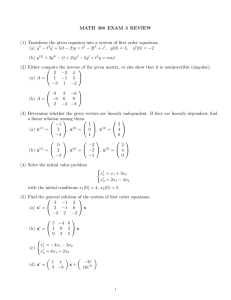PHZ3113–Introduction to Theoretical Physics Fall 2008 Problem Set 3 Sept. 11, 2008
advertisement
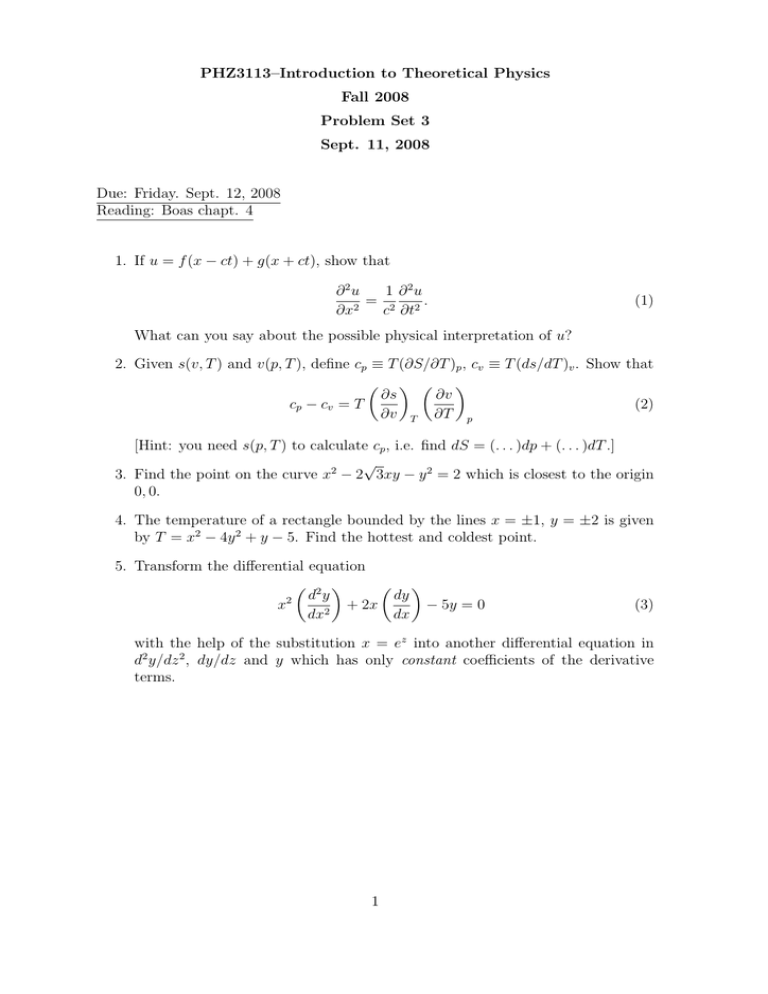
PHZ3113–Introduction to Theoretical Physics Fall 2008 Problem Set 3 Sept. 11, 2008 Due: Friday. Sept. 12, 2008 Reading: Boas chapt. 4 1. If u = f (x − ct) + g(x + ct), show that 1 ∂ 2u ∂ 2u = . ∂x2 c2 ∂t2 (1) What can you say about the possible physical interpretation of u? 2. Given s(v, T ) and v(p, T ), define cp ≡ T (∂S/∂T )p , cv ≡ T (ds/dT )v . Show that µ ¶ µ ¶ ∂s ∂v (2) cp − cv = T ∂v T ∂T p [Hint: you need s(p, T ) to calculate cp , i.e. find dS = (. . . )dp + (. . . )dT .] √ 3. Find the point on the curve x2 − 2 3xy − y 2 = 2 which is closest to the origin 0, 0. 4. The temperature of a rectangle bounded by the lines x = ±1, y = ±2 is given by T = x2 − 4y 2 + y − 5. Find the hottest and coldest point. 5. Transform the differential equation µ 2 ¶ µ ¶ dy dy 2 x − 5y = 0 + 2x 2 dx dx (3) with the help of the substitution x = ez into another differential equation in d2 y/dz 2 , dy/dz and y which has only constant coefficients of the derivative terms. 1
